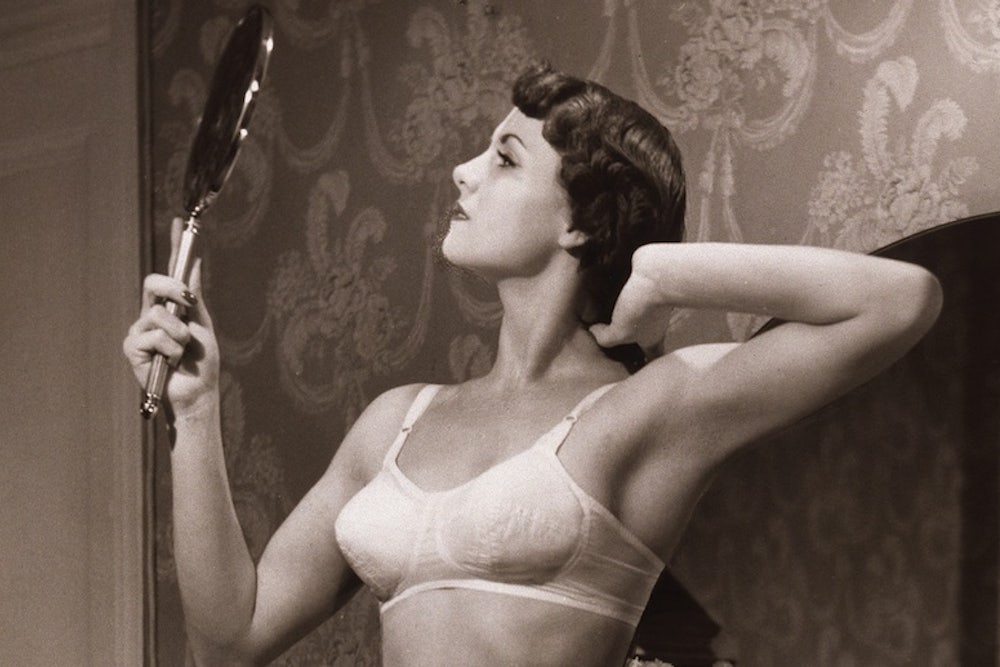Denouncing the narcissism of the young seems to have become a generational rite of passage, from the Silent Generation labeling the Baby Boomers “the ‘me’ generation” to the Boomers calling their own kids “the ‘me me me’ generation.” Calling young people self-centered is an easy way to annoy them, but it might do something more egregious: diminish the important psychoanalytic concept of narcissism. Elizabeth Lunbeck, who teaches the history of psychiatry at Vanderbilt University, is on a mission to rescue the concept of narcissism with her new book, The Americanization of Narcissism.
“It’s very easy to call someone a narcissist,” says Lunbeck. “But if the category is so diluted that everyone is a narcissist, it loses its explanatory power.” Lunbeck traces the history of the notion of narcissism in the American imagination, revealing how misconceptions came about and how they can be rectified.
Alice Robb: Are we becoming more narcissistic?
Elizabeth Lunbeck: The language of self-esteem is far more prevalent now than it was 40 or 50 years ago, certainly, but does that mean that people are more narcissistic? I’m not sure. People love to hear that the young are the most narcissistic ever. It makes for good copy. But some of the things that are invoked as exemplary of narcissism, like selfies—you can go back and look at all the ways people were documenting themselves in the past using different technology.
AR: Researchers say Americans’ scores on the Narcissistic Personality Inventory (NPI) are higher than ever.
EL: I find the NPI as a measure of narcissism quite problematic. The inventory measures dimensions of what we would call malignant narcissism—superiority, exhibitionism, exploitativeness—but it also measures healthy narcissism, and it puts those scores on a single, additive scale.
AR: What’s the difference between these two strands of narcissism?
EL: Pathological narcissists are the kind of abusive, manipulative, cunning, but often very successful people who can be quite seductive. They draw people into their ambit, and then exploit and discard them. If someone’s just a brute, they’re not going to be very successful; it’s the seductive brute that’s the problem. This is someone you really don't want to be near.
The other kind of narcissism is healthy narcissism, and it’s necessary for sustaining creativity, ambition, good self-esteem, relationships with other people. The healthy narcissist—the productive narcissist—is able to marshal that high self-esteem and put it to good use, to be a leader. It’s pretty much taken for granted in the leadership literature that a good CEO is a narcissist. It’s a matter of getting the amount of narcissism just right: enough to be bold and creative, but not so much that you run the company into the ground or engage in illegal behavior.
AR: Why does narcissism have such a bad reputation?
EL: From 1910, when Freud delineated the concept, up until the 1970s, the concept of narcissism was pretty much confined to psychoanalysis. When it entered the cultural realm in the 70s with Christopher Lasch’s book [The Culture of Narcissism: American Life in an Age of Diminishing Expectations], it was pathological narcissism that got attention. Healthy narcissism was not part of the conversation. Narcissism was seen as an entirely bad thing—and that's how it’s often seen today, even in learned discussion outside of psychiatry. Anything—being interested in nice clothes, wanting to live in a nice house—can be termed an expression of narcissism. The concept’s been impoverished in the public realm.
I would argue that a lot of behaviors popular psychology calls ‘narcissism’ are actually expressions of healthy self-esteem. In the 70s, around the time Lasch published his book, there was a lot of critique of the self-absorption of the time, self-awareness movements, the focus on “me, me, me.”
AR: What’s the difference between narcissism and self-esteem?
EL: There’s a genre of pop psychology that promotes healthy self-esteem, but in the popular conversation, the prevailing feeling is that it’s dangerous to have too much self-esteem. It’s become the object of ridicule. A lot of the popular books on narcissism argue that self-esteem is problematic because it could lead to narcissism, but we all need healthy self-esteem; without self-esteem, there’s no sense of self. We have to get the amount of our self-esteem right. If it’s too high, we turn into jerks; if it’s too low, we are depressed or have no presence in the world.
AR: Why is it important to revive the concept of narcissism?
EL: The power of the concept of narcissism is in its paradoxical nature. It can refer to and explain both what we value the most and what we despise the most—it covers an incredible range of human behavior, from normal functioning to pathological destructiveness. It's hard to think of many concepts that can explain both ends of the spectrum. A lot’s been lost as the concept’s been impoverished in the public realm.
This interview has been edited and condensed.
